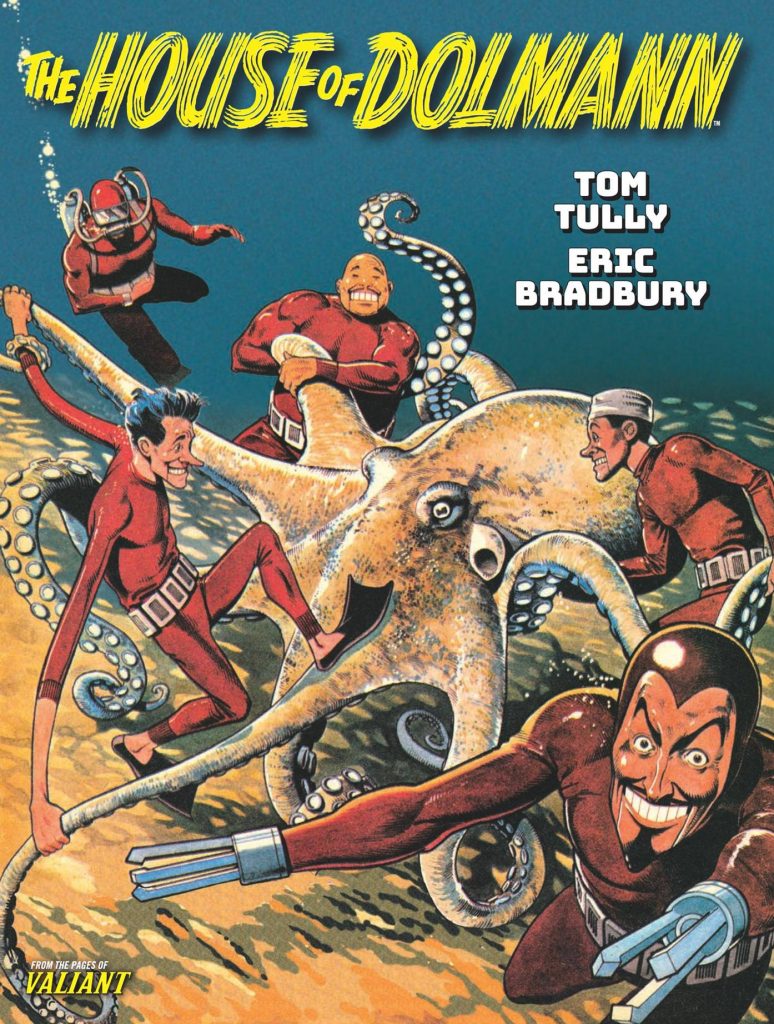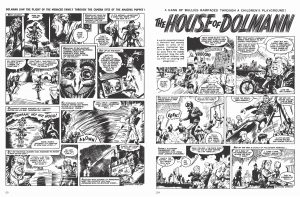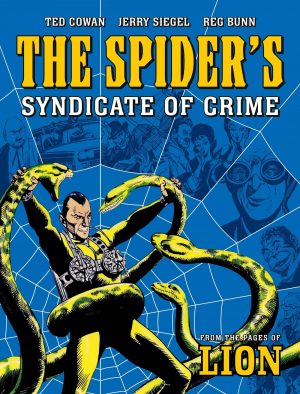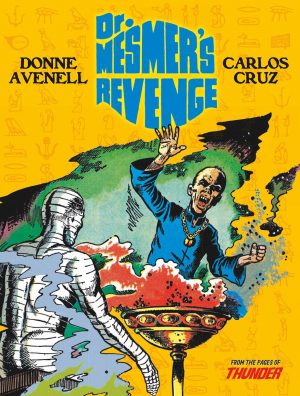Review by Ian Keogh
The entertainment served up to British children of the 1960s occasionally broke wildly free from the reassuringly instructive post-war, middle class sensibilities. Anyone who watched The Singing Ringing Tree as a child still shudders when the name is mentioned, and aren’t those Thunderbirds puppets resolutely creepy when you look at them? The House of Dolmann falls into that disturbingly off category, although it’s given a veneer of normality via Eric Bradbury’s polished action art.
Unlike other British weekly comics of the 1960s Valiant wasn’t explicitly themed, so could run features that moved off the beaten track. Eric Dolmann is a master inventor, and creates six remotely controlled puppets, around three feet high, each with a distinct talent, and – here’s the disturbing part – distinct personalities voiced by Dolmann himself. Astro flies the Dollcopter, Micro has suction cups replacing hands and feet, Elasto stretches, while the sinister looking Mole has hollow arms containing whatever tools were needed for the week’s adventure. Raider fires guns, and Togo is a form of sumo wrestler. They all call him “Master”, and he drives them around in a sidecar attached to his motorcycle
Tom Tully gave the strip the same sardonic tone as imported American TV shows dealing with fantastic crooks and spies, such as The Man From U.N.C.L.E., and each week Dolmann and his puppets investigate some strange strange event. Apply any test of logic and the trimmings are fruitloop crazy, as if Grant Morrison had jumped back in time and applied his unique sensibilities to what’s otherwise a well defined and relatable concept. However, Tully doesn’t reiterate that the puppets’ dialogue is all voiced by Dolmann, so anyone picking up on the strip a few weeks after it began could easily assume they were miniature robots, just more refined versions of those used in General Jumbo.
Bradbury spent a lot of time with the black ink brush creating dark and shadowy environments, and his people are fantastic, individual and never stiff looking when moving. Because he’s drawing times gone by, and because comics are no longer densely packed pages with multiple panels his style can’t help but seem old fashioned, but look more closely to see a phenomenally talented artist at work. Carlos Cruz draws the final strip very nicely, able to get away with fewer panels per page in a story originally prepared for an annual.
For the most part Tully has Dolmann and his robots up against threats with powerful technology at their disposal, or at the very least criminal experts in their field, such as the strange fur thief. Occasionally, though, he veers off into tongue in cheek territory exemplified by the ridiculous bikers terrorising the park playground on the sample art. It’s inventive, but there’s not a great variety when a couple of dozen stories are included between the same covers, and sadly never as strange as the concept itself.





